Antitank capabilities of Soviet 122 mm self-propelled artillery mounts
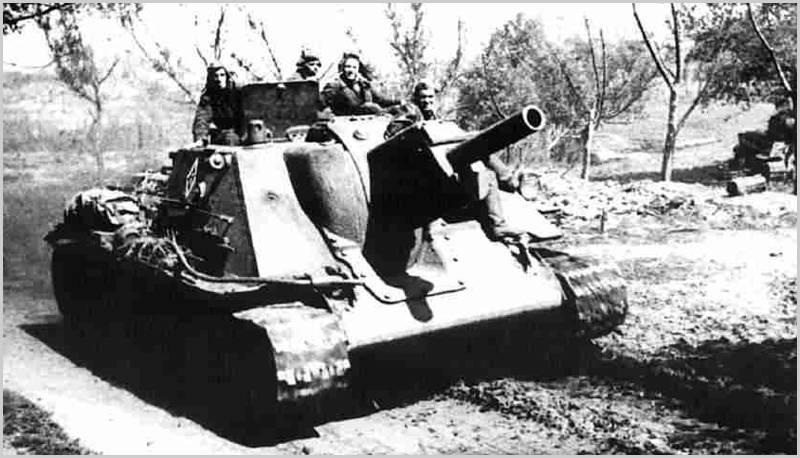
In the initial period of the war, the number of trophies of the Red Army was several dozen 75-mm self-propelled guns Sturmgeschütz III (StuG III). For lack of their own self-propelled guns, captured StuG IIIs were actively used in the Red Army under the designation SU-75. The German "artillery assaults" had good combat and operational-operational characteristics, had good protection in the frontal projection, were equipped with excellent optics and a very satisfactory gun.
The first report on the use of StuG III by Soviet troops dates back to July 1941. Then the Red Army during the Kiev defensive operation managed to capture two serviceable self-propelled guns.
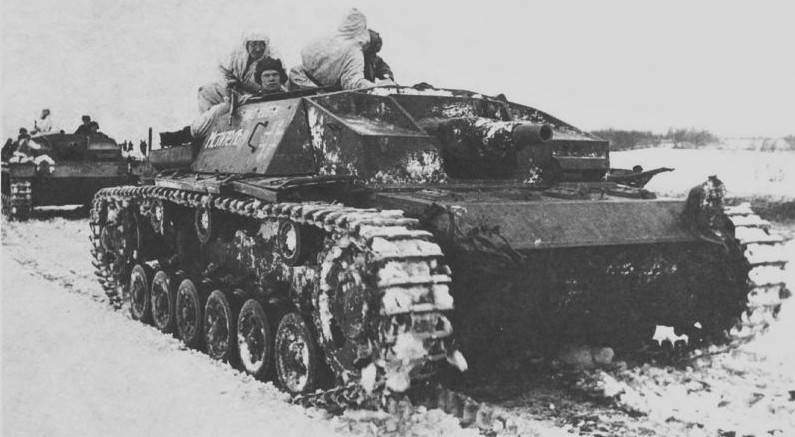
Subsequently, part of the captured “artillery assaults” requiring factory repair was converted into the self-propelled guns SU-76I, and serviceable vehicles were used in their original form. Some self-propelled guns modifications StuG III Ausf. F and StuG III Ausf. G, armed with long-barreled 75-mm guns and protected by 80-mm frontal armor, were operated in the Red Army until the end of the war as fighters tanks.
By the middle of 1942, the Soviet command had accumulated some experience with the use of trophy self-propelled guns and had an idea of what an “artillery assault” should be like, intended for firing at visually observable targets. Specialists came to the conclusion that high-explosive fragmentation shells of 75-76,2 mm are suitable for providing infantry fire support, they have good fragmentation effect on the enemy’s uncovered manpower and can be effectively used to destroy light field fortifications. But against capital fortifications and brick buildings turned into long-term firing points, self-propelled guns equipped with larger caliber guns were required. Compared to a 76,2 mm shell, a 122 mm howitzer high-explosive fragmentation shell had a significantly greater destructive effect. The 122-mm shell, weighing 21,76 kg, contained 3,67 kg of explosives versus 6,2 kg of a three-inch shell with 710 g of explosive. With a single shot of a 122 mm gun, more could be achieved than with a few three-inch shots.
Self-propelled artillery mount SG-122
Considering the fact that in the Soviet warehouses of captured armored vehicles there was a significant amount of StuG III self-propelled guns, it was decided at the first stage to create self-propelled guns based on them, armed with a 122 mm M-30 howitzer.
However, to accommodate the 122 mm M-30 howitzer, the StuG III was too tight and had to re-design a new cabin of a larger volume. The Soviet-made fighting compartment, which housed 4 crew members, became significantly higher, its frontal part had anti-ballistic armor. The thickness of the frontal armor of the wheelhouse is 45 mm, the sides are 35 mm, the stern is 25 mm, the roof is 20 mm. For alteration used StuG III Ausf assault guns. C or Ausf. D with 50 mm frontal armor of the hull, the thickness of the side armor was 30 mm. Thus, the protection of self-propelled guns in the frontal projection approximately corresponded to the T-34 medium tank.
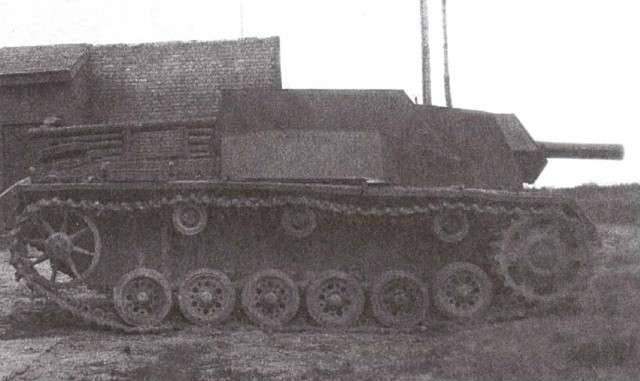
Self-propelled gun received the designation SG-122, also sometimes found SG-122A ("Artsturm"). Serial production of self-propelled guns on the StuG III chassis began in the late autumn of 1942 at the unevacuated capacities of Mytishchi Carriage Works No. 592. In the period from October 1942 to January 1943, 21 self-propelled guns were handed over to military acceptance.
Part of the SG-122 was sent to training centers for self-propelled artillery, one machine was intended for testing at the Gorokhovets training ground. In February 1943, the 1435th self-propelled artillery regiment, which had 9 SU-76 and 12 SG-122, was transferred to the 9th Panzer Corps of the 10th Army of the Western Front. There is little information about the combat use of the SG-122. It is known that during the period from March 6 to March 15, the 1435th SAP, participating in battles, lost all the material part from enemy fire and breakdowns and was sent for reformation. During the battles, about 400 76,2 mm and more than 700 122 mm shells were used up. The actions of the 1435th SAP contributed to the capture of the villages of Lower Akimovka, Upper Akimovka and Yasenok. At the same time, in addition to firing points and anti-tank guns, several enemy tanks were destroyed.
Apparently, the combat debut of the SG-122A was not very successful. In addition to poor training of personnel, the effectiveness of self-propelled guns was adversely affected by the lack of good sights and observation devices. Due to poor ventilation during firing, there was a strong gas contamination of the conning tower. Due to the constraint, the working conditions of the commander, two gunners and the loader were difficult. Specialists also noted the excessive congestion of the front rollers, which affected the reliability of the chassis.
To date, not a single original self-propelled guns SG-122 has been preserved. The instance installed in Verkhnyaya Pyshma is a layout.
SU-122 self-propelled artillery mount
In connection with the revealed shortcomings of the SG-122 and the limited number of StuG III chassis, the 122-mm self-propelled artillery installation was decided to be built on the basis of the T-34 tank. Self-propelled gun SU-122 did not appear from scratch. At the end of 1941, in order to increase the production of tanks, a design of a reckless T-34 was developed with a 76,2-mm cannon installed in the wheelhouse. Due to the abandonment of the rotating turret, such a tank should have been easier to manufacture and had thicker armor in the frontal projection. In the future, these developments were used to create a 122-mm self-propelled guns.
In terms of protection, the SU-122 practically did not differ from the T-34. The crew was 5 people. Self-propelled gun was armed with a "self-propelled" modification of the 122-mm howitzer mod. 1938 - M-30S, while maintaining a number of features of the towed gun. So, the placement of controls for the aiming mechanisms on opposite sides of the barrel required the presence of two gunners in the crew, which, of course, did not add free space inside the fighting compartment. The range of elevation angles ranged from −3 ° to + 25 °, the horizontal firing sector ± 10 °. The maximum firing range is 8000 meters. Combat rate of fire - up to 2 rounds / min. Ammunition from 32 to 40 rounds of separate shell loading, depending on the series of release. Mostly these were high-explosive shells.
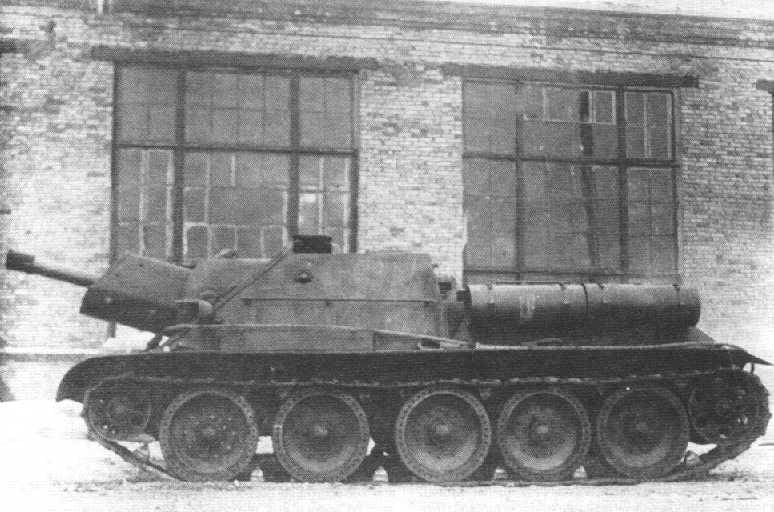
Field tests of the prototype SU-122 were completed in December 1942. Until the end of 1942, 25 self-propelled guns were manufactured. At the end of January 1943, the first two mixed-propelled artillery regiments of mixed composition arrived at the front near Leningrad. The SAP included 4 batteries of light self-propelled guns SU-76 (17 vehicles) and two batteries SU-122 (8 vehicles). In March 1943, two more self-propelled artillery regiments were formed and staffed. These regiments came at the disposal of the commanders of the armies and fronts and were used during offensive operations. Subsequently, separate formation of regiments equipped with 76,2- and 122-mm self-propelled guns began to be carried out. According to the staff of the SAP on the SU-122 had 16 self-propelled guns (4 batteries) and one commander T-34.
In parts of the army, the SU-122 was met better than the SU-76. Self-propelled gun, armed with a powerful 122-mm howitzer, had higher security and proved to be more reliable in operation.
During the hostilities, the use of the SU-122 to support the advancing infantry and tanks when they were 400-600 meters behind them was recognized as the most successful application. During the breakthrough of the enemy’s defense, self-propelled guns by the fire of their guns suppressed enemy firing points, destroyed obstacles and barriers, and also repelled counterattacks.
The anti-tank capabilities of the SU-122 were not high. Even the presence in the ammunition of a cumulative projectile BP-460A with armor penetration along the normal to 160 mm did not make it possible to fight tanks on equal terms. The cumulative projectile weighing 13,4 kg had an initial speed of 335 m / s, and therefore the effective range of the direct shot was a little more than 300 m.In addition, firing at quickly moving targets was very difficult and required well-coordinated crew work. Three people took part in aiming the gun at the target. The driver carried out an approximate aiming of the tracks with the help of a simple sighting device in the form of two plates. Further, gunners serving the mechanisms of vertical and horizontal guidance entered work. With a low rate of howitzer with a separate-shell loading for each aimed shot of the SU-122, an enemy tank could respond with 2-3 shots. The frontal 45-mm armor of the Soviet self-propelled gun was easily penetrated by 75- and 88-mm armor-piercing shells, and direct collisions of the SU-122 with German tanks were contraindicated. This is confirmed by the experience of military operations: in those cases when the SU-122 participated in frontal attacks along with linear tanks, they invariably suffered heavy losses.
At the same time, with the right tactics of use, the 122 mm high-explosive fragmentation shells against enemy armored vehicles were repeatedly shown to have good results. According to reports of German tankers who participated in the battle of Kursk, they repeatedly recorded cases of serious damage to heavy Pz tanks. VI Tiger as a result of shelling with 122 mm howitzer shells.
Production of the SU-122 was completed in August 1943. Military representatives took 636 cars. SU-122 actively participated in the battles of the second half of 1943 and the first months of 1944. As their numbers decrease due to a relatively small number of troops, the cessation of mass production and various kinds of losses, they were withdrawn from the SAP, which were rearmament on the SU-76M and SU-85. Already in April 1944, the SU-122 became rare vehicles in the Soviet fleet of armored vehicles, and individual self-propelled guns of this type survived until the end of the war.
The cessation of serial production of the SU-122 is primarily due to the fact that this self-propelled gun was armed with a 122-mm howitzer, which was not well suited for self-propelled guns primarily intended for firing at visually observed targets. The M-122 divisional 30 mm howitzer was a very successful artillery system, still in service in a number of countries. But in the case of arming her self-propelled guns, created on the chassis of the T-34, revealed a number of negative points. As already mentioned, the direct shot range from the M-30S adapted for self-propelled guns was relatively small, and the SU-122 did not fire from closed positions when all the advantages of a howitzer could manifest themselves. Due to the design features of the 122-mm howitzer, two gunners had to be introduced into the crew of the self-propelled guns. The gun took up too much space in the fighting compartment, creating significant inconvenience to the crew. The large forward flight of the recoil devices and their reservation made it difficult to see from the driver's seat and did not allow a full hatch to be placed on the windshield. In addition, the 122-mm howitzer for the undercarriage of the T-34 was quite heavy, which, in combination with the removal of the guns forward, excessively loaded the front rollers.
Self-propelled artillery mount ISU-122
In this situation, by analogy with the SU-152, it was logical to create a heavy self-propelled guns on the chassis of the KV-1C tank, arming it with a 122-mm gun A-19. However in real stories this did not happen, and the creation of the self-propelled gun ISU-122 on the chassis of the heavy tank IS-2 was largely due to the shortage of 152 mm ML-20S guns. In addition, a need emerged for well-protected tank destroyers, which in terms of effective firing range would be superior to German heavy tanks equipped with 88-mm guns. Since our troops, which switched to offensive operations, urgently needed heavy self-propelled guns, it was decided to use the 122-mm A-19 guns, which were in abundance in the warehouses of artillery weapons. In this place, as part of the story about Soviet 122-mm self-propelled guns, we will move away from the chronology of the development of domestic self-propelled guns and take a closer look at the ISU-122, which appeared later than the 152 mm SU-152 and ISU-152.
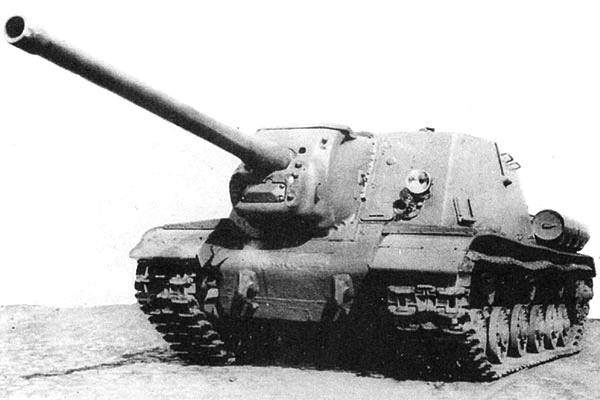
The 122-mm case gun of the 1931/37 model (A-19) had very good characteristics for its time. An armor-piercing projectile 53-BR-471 weighing 25 kg was accelerated in the barrel length 5650 mm up to 800 m / s, at a distance of 1000 m normal punched 130 mm armor. At an angle of meeting with armor of 60 °, at the same range, armor penetration was 108 mm. High-explosive fragmentation projectile 53-OF-471 weighing 25 kg, containing 3,6 kg of TNT, also showed good performance when firing at armored vehicles. Repeatedly, there were cases when, as a result of the 122-mm OFS getting into the frontal part of the Tigers and Panther, the tanks received heavy damage, and the crew was damaged by the internal chips of the armor. Thus, the self-propelled artillery mount ISU-122 was able to deal with all serial German tanks at real combat distances.
For installation in self-propelled guns was developed "self-propelled" modification A-19C. The differences between this option and the towed one consisted in transferring the gun guidance to one side, equipping the breech with a receiver tray for easy loading and introducing an electric trigger. In the second half of 1944, mass production of an improved modification of the gun intended for arming the self-propelled guns began. The upgraded version received the designation "122-mm self-propelled gun mod. 1931/44 gg. ”, And in this version, in addition to the type of trunk with a free pipe, monoblock trunks were used. The design of the mechanisms of vertical and horizontal interference made changes aimed at increasing reliability and reducing inertial load. Both guns had a piston lock. The angles of vertical guidance ranged from -3 to + 22 °, horizontally - in the sector of 10 °. The range of a direct shot at a target with a height of 2,5–3 m was 1000–1200 m, the effective firing range for armored vehicles was 2500 m, and the maximum was 14300 m. Rate of fire was 1,5–2 shots / min. The ISU-122 ammunition included 30 separate-shell loading rounds.
Serial production of the ISU-122 began in April 1944. Self-propelled guns of the first series had solid frontal armor of the hull. ISU-122, produced since the fall of 1944, had frontal armor of the hull, welded from two rolled armor plates. This version of the self-propelled gun was distinguished by an increased thickness of the gun’s mask and more capacious fuel tanks.

Since October 1944, in the area of the right hatch, an anti-aircraft installation of a 12,7 mm DShK machine gun was mounted. A large-caliber anti-aircraft machine gun DShK was in great demand during the storming of cities, when it was necessary to destroy the enemy infantry that was hiding among the ruins or on the upper floors and attics of buildings.
The thickness of the frontal and side armor of the hull was 90 mm, the stern of the hull - 60 mm. Gun mask - 100-120 mm. The logging forehead was covered with 90 mm armor, the logging board and feed were 60 mm. Roof - 30 mm, bottom - 20 mm.
The mass of the installation in the combat position was 46 tons. A diesel engine with a capacity of 520 hp could drive the car along the highway to 37 km / h. The maximum speed along the lane is 25 km / h. Cruising on the highway - up to 220 km. Crew - 5 people.
Since May 1944, some heavy self-propelled artillery regiments, previously armed with heavy self-propelled guns SU-152, began to switch to ISU-122. When transferring regiments to new states, they were awarded the rank of guards. In total, until the end of the war, 56 such regiments were formed with 21 self-propelled guns ISU-152 or ISU-122 in each (part of the regiments had a mixed composition). In March 1945, the 66th Guards Heavy Self-propelled Artillery Brigade was formed (65 ISU-122 and 3 SU-76). Self-propelled guns were actively used at the final stage of the war. According to archival documents, in 1944, 945 ISU-122s were built, of which 169 vehicles were lost in hostilities.
Unlike tanks and self-propelled guns produced in the initial period of the war, self-propelled guns ISU-122 was quite advanced and quite reliable. This was largely due to the fact that the main "children's sores" of the motor-transmission group and chassis were identified and eliminated on the IS-2 and ISU-152 tanks. Self-propelled gun ISU-122 is fully consistent with its purpose. It could be successfully used to destroy long-term fortifications and destroy heavy enemy tanks. So during tests at the training ground, the frontal armor of the German tank PzKpfw V Panther was pierced by a 122-mm armor-piercing shell fired from a distance of 2,5 km. At the same time, the A-19C gun had a significant drawback - a low rate of fire, which was limited to a manually open piston-type shutter. The introduction of the 5th member, the castle, into the crew not only did not solve the problem of low rate of fire, but also created additional crampedness in the fighting compartment.
Self-propelled artillery mount ISU-122S
In August 1944, the production of self-propelled guns ISU-122S began. This self-propelled gun was armed with a 122 mm D-25C gun with a wedge semi-automatic shutter and a muzzle brake. This gun was created on the basis of the D-25 gun, which was installed in the turret of the heavy tank IS-2.
The installation of a new gun led to changes in the design of recoil devices, cradles and a number of other elements. The D-25C gun was equipped with a two-chamber muzzle brake, which was absent from the A-19C gun. A new cast mask was created with a thickness of 120-150 mm. The sights of the gun remained the same: the telescopic TSh-17 and the panorama of Hertz. The crew of self-propelled guns was reduced to 4 people, excluding the castle. The convenient location of the crew in the fighting compartment and the semi-automatic shutter of the gun contributed to an increase in the combat rate of fire up to 3-4 rds / min. There have been cases when a well-coordinated crew could do 5 rounds / min. The vacated space was used to place additional ammunition. Although the power of the guns of the self-propelled guns ISU-122 did not exceed the tank IS-2, in practice, the actual combat rate of self-propelled guns was higher. This is primarily due to the fact that the self-propelled gun had a more spacious fighting compartment and better working conditions for the loader and gunner.
The increase in rate of fire, which was achieved on the ISU-122S, positively affected the anti-tank capabilities of self-propelled guns. However, the ISU-122S was not able to supplant the ISU-122 with a 122-mm gun mod. 1931/1944, which was associated with a shortage of D-25 guns, which also armed the IS-2 tanks.
Self-propelled guns ISU-122S, actively used at the final stage of the war, were a very powerful anti-tank weapon. But they were not able to reveal themselves in this capacity to the full. By the time the ISU-122S mass production began, German tanks were rarely used for counterattacks and were mainly used in defensive battles as an anti-tank reserve, operating from ambushes.
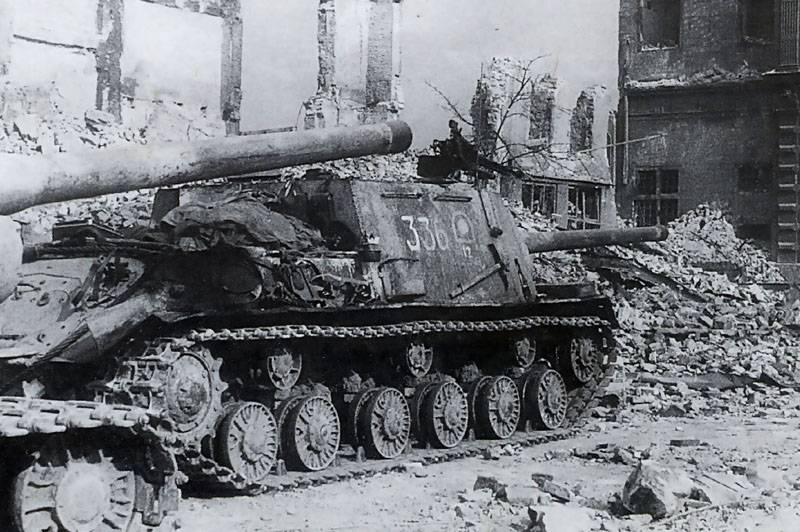
The use of ISU-122 / ISU-122S in woodland and urban battles was difficult due to the long gun. Maneuvering in narrow streets with a long gun sticking a few meters ahead from the self-propelled guns with the front location of the fighting compartment was not easy. In addition, the driver had to be very careful on the slopes. Otherwise, there was a high probability of "scooping up" the soil with a gun.
The mobility and patency of self-propelled guns ISU-122 / ISU-122S was at the level of the heavy tank IS-2. In the conditions of the mud, they often did not keep pace with the T-34 medium tanks, as well as the tank destroyers SU-85 and SU-100.
In total, military representatives adopted 1735 ISU-122 (1335 until the end of April 1945) and 675 ISU-122S (425 until the end of April 1945). Serial production of self-propelled guns of this type was completed in August 1945. In the postwar period, ISU-122 / ISU-122S were modernized and operated until the mid-1960s.
To be continued ...
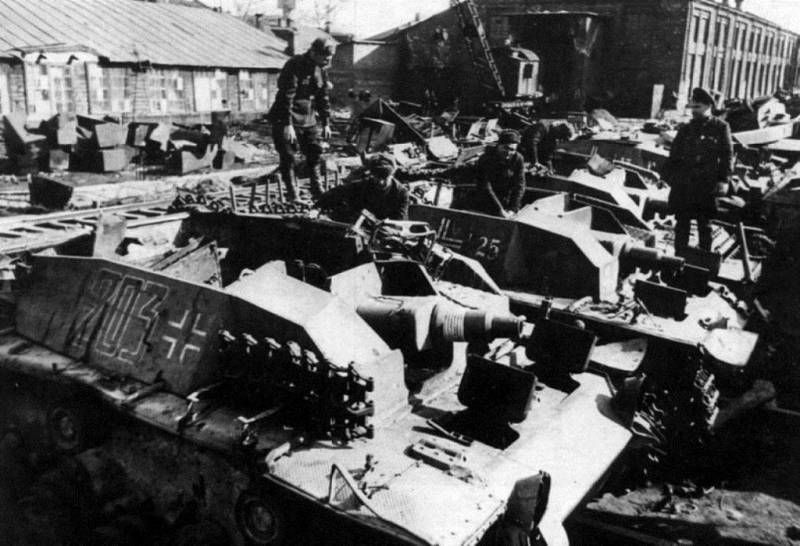
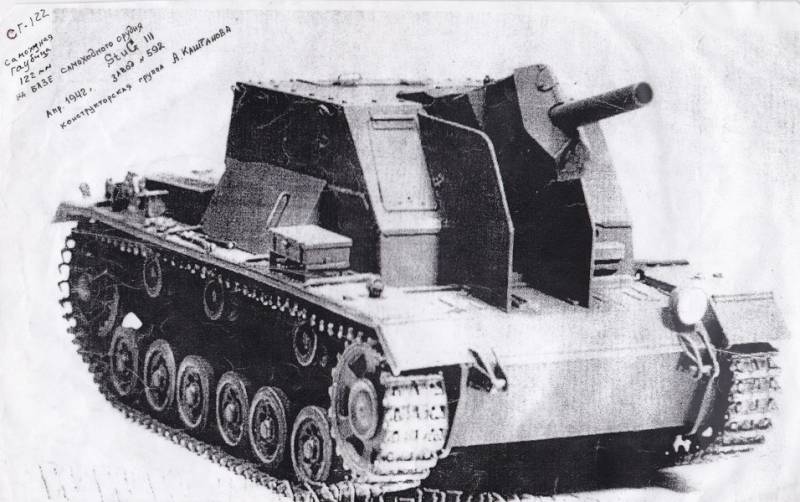
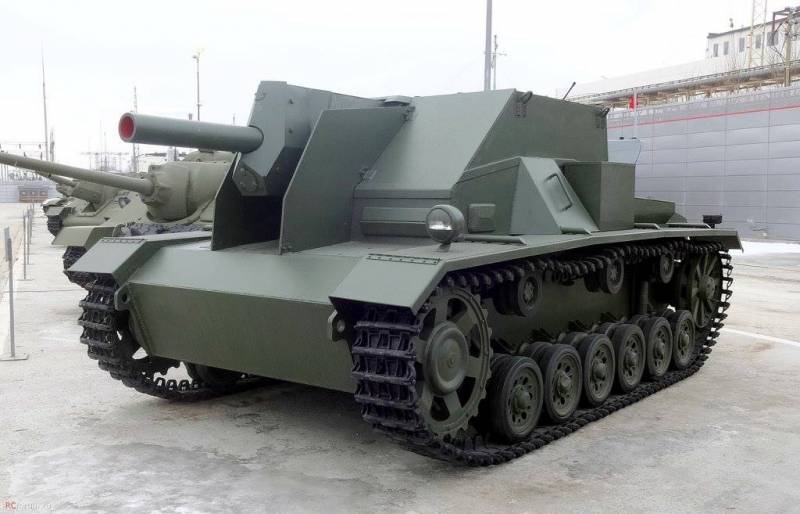
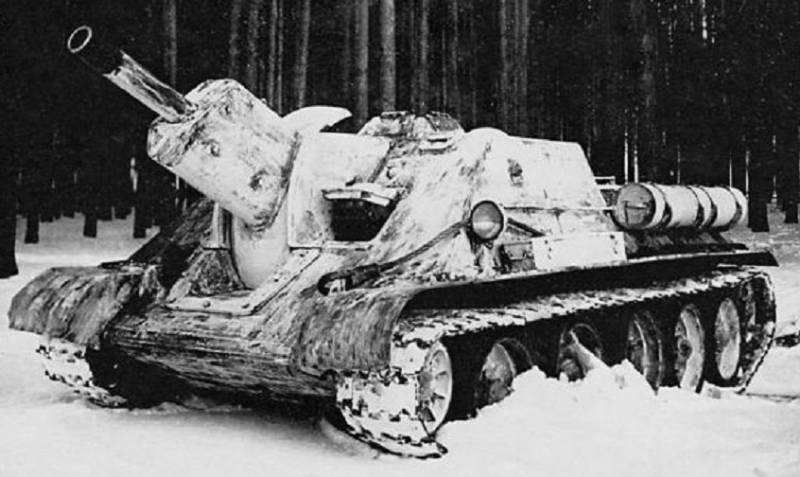
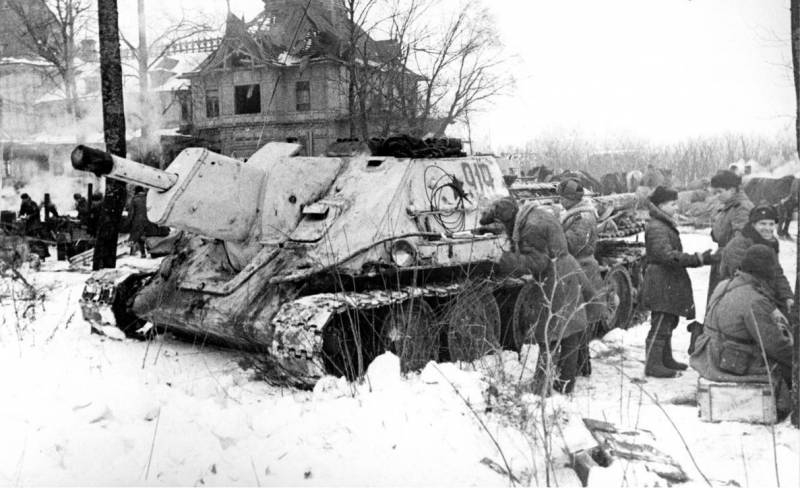
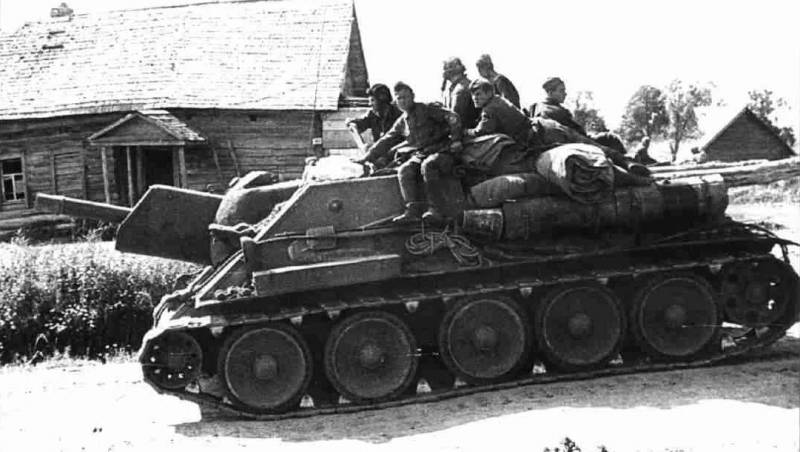
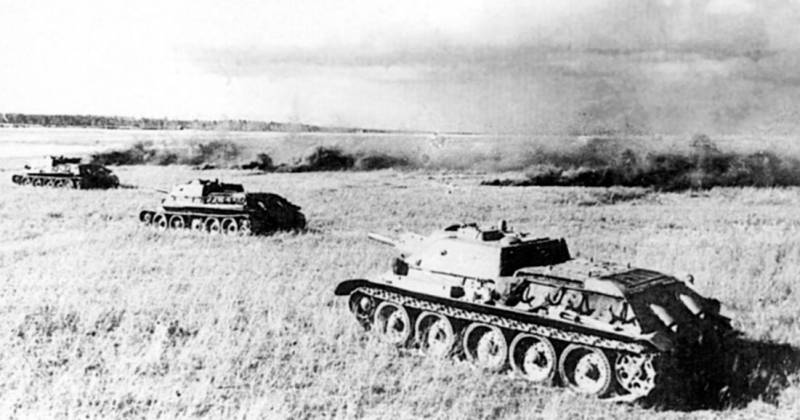
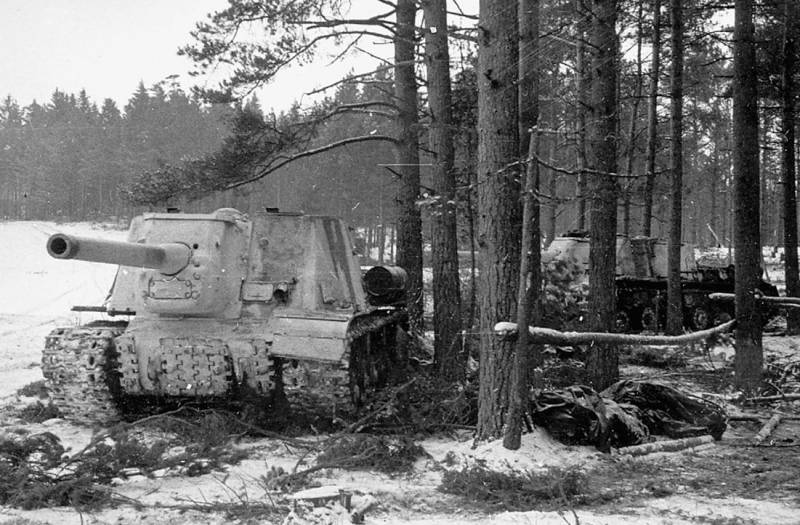
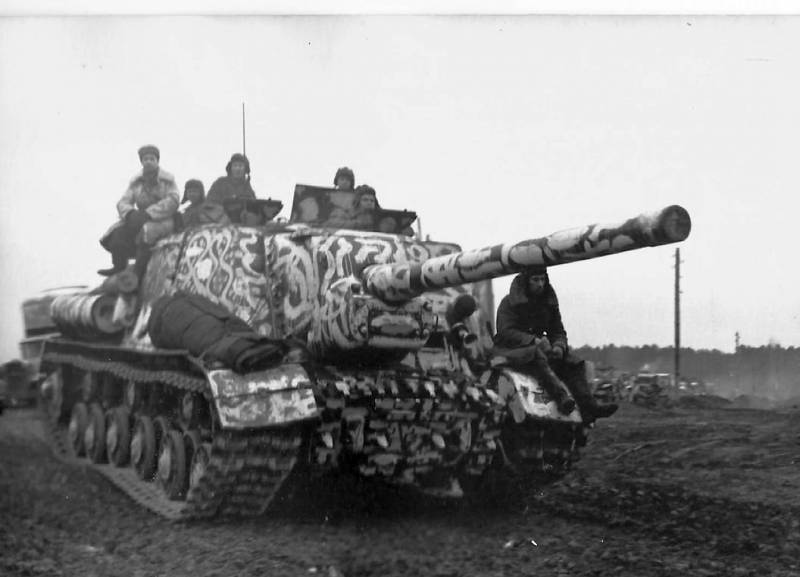
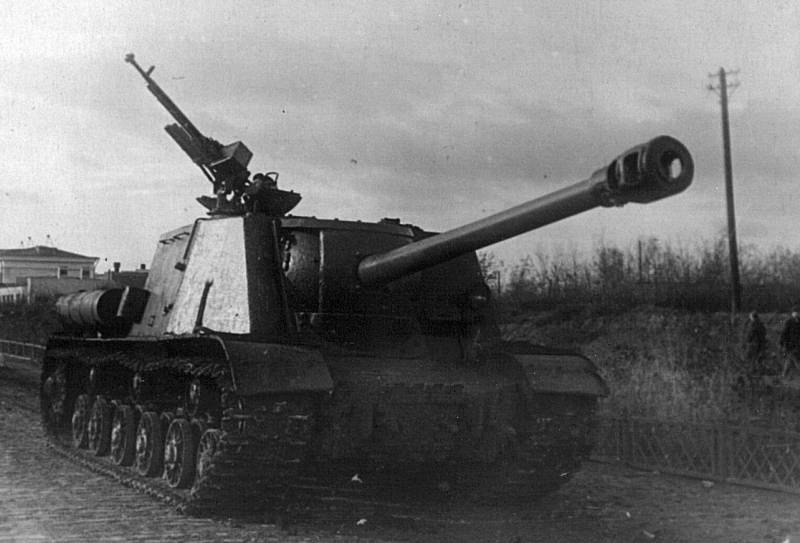
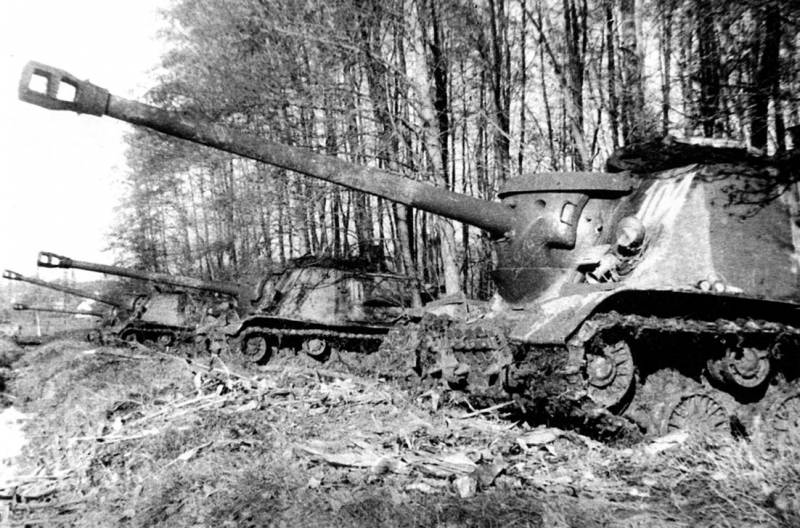
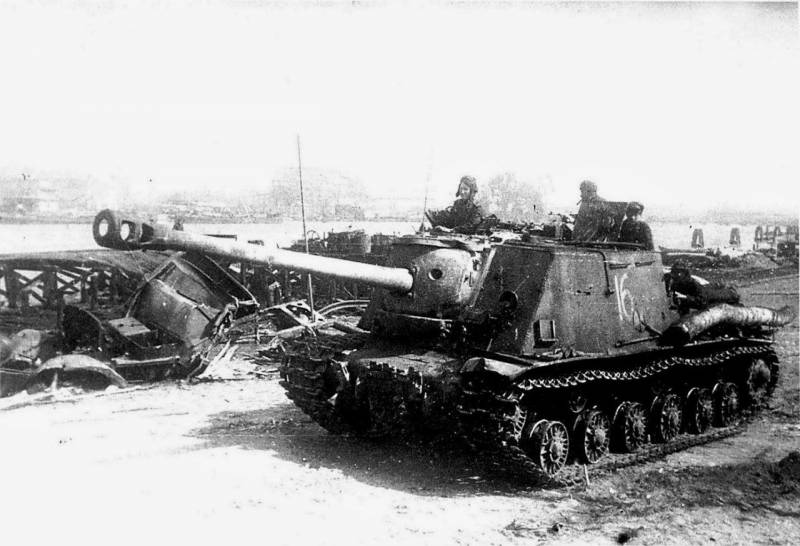
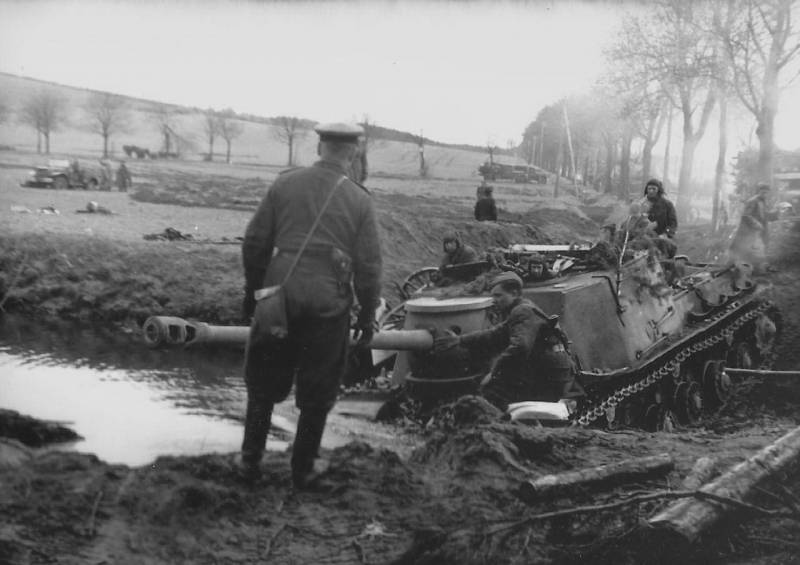
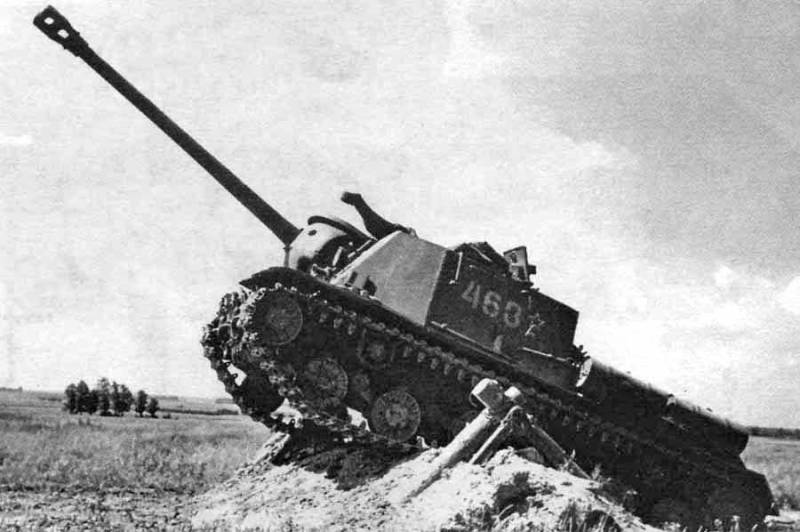
Information